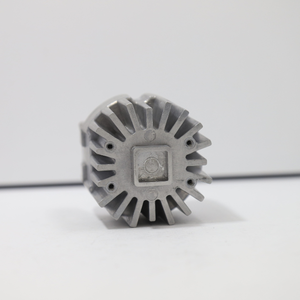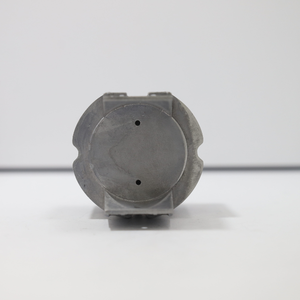
All categories
Featured selections
Trade Assurance
Buyer Central
Help Center
Get the app
Become a supplier

(198034 products available)













CNC gears are used in various applications. Generally, a CNC gear refers to gear systems designed by computer numerical controlled machines, usually involving technology used to shape materials like metal, wood, plastic, and others. However, they can be divided into two main categories. The categories include industrial and personal gear systems. Industrial gear systems may include units/machinery that are typically huge with fast processing speeds, like a CNC mill for gears. That is because most applications will require a rugged processing unit with high efficiency and speed. On the other hand, a personal gear system might be a small-scale CNC machine for home use that is more user-friendly and easier to operate.
Among the most commonly used type of gears is the helical gear. It is known for its ability to smoothly transfer engine power to wheels when driving at high speeds. Therefore, making it suitable for car differential applications. Another common type is the straight-cut gear. It is used in applications where noise is of no concern, such as racing vehicles' lightweight gearboxes and some CNC machines. Bevel gears, on the other hand, are primarily used in CNC machine spindles, as they assist in changing the rotating axis direction. Worm gears help achieve a high-speed torque usually needed to operate heavy machinery. They are mostly used in conjunction with a hobbing CNC gear machine. Hobbing machines cut the gear teeth to achieve precision for the gear to work as required.
The CNC gear cutting machine's specification may vary depending on whether it's a horizontal or vertical gear cutter. Also, different models will have unique specifications. However, here are some basic specifications one should expect with a cnc gear machine:
Cutter set or Tooling
The CNC gear machine uses different cutter sets or tooling to achieve varied results. Depending on the project, the machine will use straight, helical cutters, hobs, or router bits. Each cutter has its unique features to create gears of different specifications.
Cutter pitch diameter
The pitch diameter of a CNC cutter is the size of the circle where the gear's teeth spacing works ideally. It's an important factor in gear design and affects how well the cutter meshes with other gears.
Cutter number of teeth
A CNC gear cutter can have different numbers of teeth, impacting how it cuts through materials and its precision when shaping gears. It's important to note that this relates directly to the cutter's size.
Cutter orientation
Cutter orientation refers to how gear cutters are placed about an axis. This can be either vertical or horizontal. The direction might influence the type of gears the CNC machine can produce.
Cutter feed rate
The feed rate is the speed at which the gear blank moves into the cutter. This will vary depending on the material being cut and the cutter's speed.
Cutter direction
There are two main ways a CNC cutter can operate– clockwise or counter-clockwise. Normally, this will depend on how the machine is designed or the specific application requirements.
Maximum cnc cutter diameter
This is the largest diameter of a gear one can cut with the particular cnc machine. It will vary depending on the model and its design.
Machine power and torque
These specifications will vary from one machine to another. However, here one is looking at the motor power used to drive the cutter. It also includes the torque used to cut through the material.
A poorly maintained gear cutting machine can lead to equipment failure and costly downtimes. Here are some maintenance tips to keep the machine in top condition:
Perform Routine Inspections
It's important to inspect the machine regularly to identify areas that need repairs or replacement. Some routine checks to perform include checking the lubrication system, belts, and cutting tools. It's also important to look for abnormal sounds or vibrations and address them immediately.
Cleaning and Lubrication
Many cutting expert tips suggest cleaning up the debris and residue after each use. Use a vacuum or compressed air to remove internal parts of the machine. From time to time, the machine should be lubricated to reduce abrasion and enhance functionality.
One of the main usage scenarios for CNC machining in the gear industry is the automotive sector. CNC equips and cuts make it possible to create the astonishing number of gears used in modern vehicles–an estimated ten thousand per one thousand cars! These include spur gears that mesh directly with another spur, helical gears with a similar angled tooth design, bevels with a conical shape for changing gear axis angles, and racks and pinions that convert circular motion into linear.
CNC precision results in automotive spur and helical drive trains being able to withstand higher torques, quietly transmit power, and require less maintenance while lengthening a vehicle's lifespan. Bevel gears allow vehicle differential assemblies to smoothly change a car's direction of travel. Pinion racks typically form the steering mechanism of an automobile, with its rack part moving linearly to help steer the vehicle, while a CNC-cut pinion gear rotates to turn the rack.
Heavy machinery that requires torque to operate, ranging from aquaculture feeders to the gear that spins wind turbine blades, utilizes torque-producing CNC-cut spur and helical gears. The oil and gas industry relies on those same types of gears to transport crude oil or natural gas through pipelines with the help of screw pumps that use spur or helical gears. CNC beveling gear operates compressors in the refrigeration and air-conditioning industries.
CNC gears work in home appliances as simple machines to reduce input energy. Microwaves apply spur gear trains to reduce a motor's rotational speed. Ceiling fans use pinions to achieve direct drive. Washing machines apply geared motors to rotate a drum for laundry.
Medical devices like infusion pumps use spur gears to regulate fluid infusion speed. Dental handpieces operate with spur CNC gears to achieve appropriate rotational speeds for precise dental work. Helical CNC gears are incorporated into power tools such as CNC lathes, routers, and milling machines to maintain their compact sizes, low noise levels, and suitability for high-speed operation.
Robotics leverages CNC gears primarily using spur and helical gears for motion transmission and torque increase. Speed reducers employ CNC bevel gears to slow down rotatory movement so that energy output may be used effectively in robot arms, humanoid robots, and self-driving vehicles. CNC racks and pinion gears belong to autonomous vehicles and drones to transform the circular motion of an electric motor into linear motion.
When it comes to purchasing CNC gears for businesses, there are several factors one must consider before going ahead. This includes looking into matching gear sets with no-slip joints and a heavy mesh contact pattern to ensure the vehicle is given the right ratio.
It's best to buy heat-treated CNC gears, as untreated ones will chip, crack, or break with ease, causing the business to waste money on constantly replacing broken gear teeth. Hence, businesses should also go for quality brands that offer fast few-step replacement services if anything goes wrong with the gear ratio or the set as a whole, which isn't an uncommon occurrence.
Another thing to keep in mind when bulk-buying CNC gears is to check if aftermarket support is offered, along with tuning assistance that will help improve the vehicle's performance overall. This is especially important if the gears are used in high-performance vehicles that need to be top-notch.
Gears that are used in remote-controlled trucks or cars usually have a ratio printed on them, and they are also made of plastic. Businesses should look into the specifications of the RC vehicle in question to see if it's better to go for an upgrade or stock replacement.
Finally, businesses should ensure that the supplier they are buying from has a quality warranty on the product. In doing so, they will have the peace of mind to know that they will be compensated should there be any fault with the gear that is beyond normal wear and tear.
Q1. What are the advantages of CNC gears?
A1. The benefits of CNC gears are numerous. Due to mass production methods, they are often very affordable. They remain cost-effective even when greater precision is necessary. Surprisingly, the large-scale production of these parts increases the cost-effectiveness of using them in a design. Quality control on mass-produced items is also far more consistent, meaning that users can depend on them functioning well every time.
Q2. What software is used for CNC programming?
A2. CAD/CAM software is used when creating the CNC program. This is a computer-aided design and computer-aided manufacturing program used to develop the gear's design. The software then translates the design into a code the CNC machine can understand and use.
Q3. What materials can be CNC machined?
A3. Generally, metal, plastic, rubber, and composite materials can be gear CNC machined. Some examples of metals include aluminum, which is often used for CNC machined parts because it is lightweight and easy to machine. Steel and brass are also common choices.
Q4. How large or small a size can CNC machining achieve?
A4. While there is no definitive answer to how big or small a part CNC machining can achieve, it is known that large parts up to three meters in length and small parts with details of 5mm are possible. This will depend on the type of CNC machine used and its capabilities.